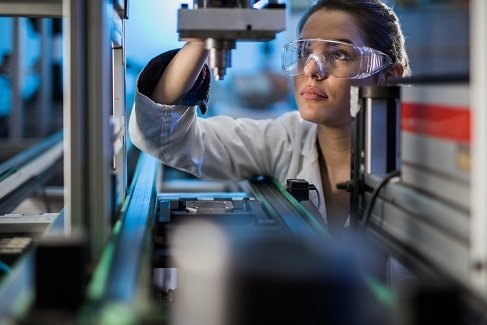The chemistry behind glow in the dark is really pretty simple.
One of the great pleasures I had growing up as a kid who loved space was buying those sticky glow in the dark stars and watching them radiate their soft green glow as I fell asleep wondering about the chemistry behind glow in the dark objects. But what really makes them glow?
The glow in the dark chemical compound is made up of different phosphors. There are thousands of chemicals that are phosphors and what’s special about them is the way they give off light after being energized in some form.
There are three primary types of phosphors: phosphorescence, which is what you’re usually seeing when something glows in the dark; chemiluminescence; and radioluminescence.
Those stars that I’d fall asleep to were phosphorescent.
They give off light after they absorb light radiation, giving it off that stored energy as light later on. They give off a glow because it retains the energy it receives and gives it off slowly, at a lower intensity than it was absorbed.
This is a similar process to fluorescence, but fluorescence has a quick reaction and gives off the energy it stored as light almost immediately.
You’ve probably noticed that there are many kinds of phosphorescent items. Some are very bright and maybe only shine for a brief time. The best were, like those stars on my ceiling, ones that gave off enough light to be a little bright, but didn’t burn too brightly so that they could continue to radiate light for a longer period of time.
Continuing to move through the chemistry of glow in the dark items, that second group, chemiluminescent items, glow because of a chemical reaction.
Here, think of a glow stick. In their simplest form, chemiluminescent items glow because two chemicals are interacting which give off energy as a byproduct of the reaction that happens when the chemicals mix. In the case of chemiluminescence, the energy byproduct is light.
That’s why with a chemiluminescent item like a glow stick, you’ve probably noticed that there’s liquid inside.
What’s actually happening inside your glow stick is that there’s a liquid inside the plastic and then a thinly cased vial of a different chemical inside the liquid. When you bend the glow stick to “turn it on,” you’re actually breaking the vial so that the chemicals mix and have a reaction.
The byproduct of that reaction is the heatless glow emitted.
In addition, to the two chemicals that react inside the glow stick, there’s a fluorescent dye that gives the glow its color.
With a chemiluminescent glow, there’s no heat, but heat can effect the glow. As you have maybe seen, when you put the glow stick in the freezer, it lasts longer. The slowing down of the molecules slows down the chemical reaction, making it last longer with a less intense glow.
The opposite would happen if you heated up the glow stick. The molecules will speed up and that speeds up the chemical reaction, making the glow stick glow more intensely. Accordingly, the glow will last a shorter amount of time.
Chemiluminescence can happen naturally as well. In such instances — like fireflies — it is called bioluminescence. That’s a subset of chemiluminescence with its own intricacies. You see it frequently in marine environments and with fungi. But fireflies are an excellent example of this process.
Continuing to look at the chemistry behind glow in the dark, the last category is the least common. Radioluminescent items combine phosphor and a radioactive element such as radium, tritium or the man-made promethium. (There are others, but those are the most common.)
You’ll see this occasionally on the hands of a watch, for instance, or on other industrial equipment where instruments may need to be used in the dark. Because a radioactive chemical is involved, the glow of a radioluminescent object doesn’t slow fade and stop giving off light energy like a phosphorescent object.
There you have it, the chemistry behind glow in the dark, explained. Next time you look at your watch or see glow in the dark stars at a museum gift shop, you can appreciate the science of glow in the dark.
Like that dig through the chemistry behind glow in the dark? Check out more articles in the series, like the chemistry behind chocolate or the chemistry of hair color.







Leave A Comment
You must be logged in to post a comment.